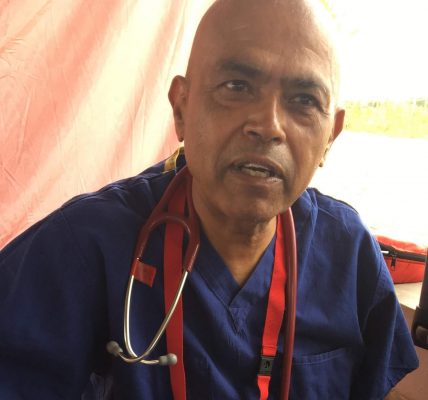The remarkable exhibition in Hawes that explores school life in the Dales from bygone days
The remarkable exhibition in Hawes that explores school life in the Dales from bygone days
There’s a bit of a puzzle that Emily Rowe Rawlence would like to solve. What happened to John Iveson?
It’s just one of the questions that she’d love answered. John lived in the house in Hawes which Emily and her family now call home, and he was clearly a force to be reckoned with in the community.
For five years, he was the formidable headmaster of the town’s school, and he was someone who firmly believed that to spare the punishment would spoil the child. Iveson was the typical teacher of his Victorian day – a disciplinarian with a cane clutched tightly in his fist.
He is also a researcher’s delight because he kept a daily journal. In one entry he writes: “Nothing will subdue children and keep discipline except the rod.” He left the school in 1876, probably much to the relief of the children.
He’s just one of scores of characters discovered by Emily and the team at the Dales Countryside Museum in Hawes for their exhibition The Story of Schools in the Upper Dales, which runs until July 18. It’s a fascinating blend of stories and photographs, telling a vivid account of the history of education in the area, seen from the point of view of the children, and also their teachers.
It all started when Emily and her husband Andy Fagg decided to put London behind them and to look at property in Hawes – Andy’s hometown, and the place where he grew up.
Emily is originally from Leeds but had moved south as a child. She laughs: “Part of my own educational life was spent attending the same school in Hackney that Tony Blair didn’t want his kids to go to – so it was all rather different from the Dales.”
When she first visited Hawes, she was mesmerised. “I could not believe how beautiful it was. Being brought up there, I think that Andy just took it as a given that it was such a lovely place to live and work.
“We started looking at various properties, and we really took our time, because our decision had to be the right one. Where did we finally choose? The very run-down and more than dilapidated building that had once been Hawes school, and the headmaster’s cottage adjoining it”.
It had been built as a National School in the early Victorian era, when education first became compulsory for all children.
Emily’s inspiration for the exhibition started, she believes, when she was standing in her new kitchen and looked out of the window.
“I’d seen it scores of times,” she laughs, “but it was one of those ‘lightbulb moments’. There in front of me, and over what had been the main entrance to the school, was a great stone lintel into which had been carved ‘Hawes National School, erected 1845’. I started to wonder how many youngsters had actually passed underneath it, and who taught there, and what were the lessons like?”
She discovered that, on average, about 100 children from Hawes and the countryside around it, attended each day.
“They’d be aged from five years old up to fourteen, and they’d all be in the same room, sitting in rows on wooden benches.”
The room, by the way, is all of eight meters by twelve. Emily adds: “There would have been one professional teacher – like John Iveson – and he would have had an assistant. But the assistant would have been one of the better and more able youngsters coming to the end of their education.”
Iveson did – sometimes – make a bad decision in his appointments. Of one hapless child he wrote: “I cannot imagine how he can carry out so many villainous points. Nay, he surpasses everything that I ever come across!”
But there were successes as well, for one later pupil-teacher was Mary Burrow, who went to school in Hawes, stayed on as a teacher – for half a century – became headmistress, retired in the late 1940s and died at the remarkable age of 104.
Teachers were very much a part of the rural community in many other ways. Reginald Place was head of Reeth Friends School from 1926 until 1958 and he was also conductor and organist of the local Methodist Church, in charge of billeting evacuees during the Second World War, and on various committees for the annual fairs.
As a child, Reginald later recalled that he was required to get up at 4am to work on the land, go to school, and then resume farming duties on his return home. It was, he wrote, like being “a slave”.
As Emily delved into her research, she realized that there were similar schools in just about every Dales community – and that the National Schools, for many years, were obliged to charge a fee, paid by every pupil.
“For many of the poorer families that was extremely difficult, because there simply wasn’t enough money. Their children were used to working on their farms and smallholdings, and when they had to be educated by law, that meant that a large part of the daytime ‘natural workforce’ disappeared.”
Just getting to school on time wasn’t easy either. No lifts in the car by parents back then, or convenient school buses. Few could even afford a bike. Emily uncovered the story of one young farmer’s daughter who walked to school every day – two miles there and back again in the evening. Not along the roads, but through the uneven fields, across a beck, and through more open country.
“In the winter, that meant that she’d be returning in the dark,” says Emily, “and on one occasion, there was a terrible winter’s storm and she woke up to find snowdrifts almost up to the height of the upper windowsills. But she still set out – with nearly all of her familiar daily landmarks obliterated. That’s determination for you.”
Starting in 2019, Emily began interviewing scores of Dales residents, and discovered a rich tapestry of stories and recollections. One school had outside toilets – but with a bit of a difference. They were “Roman style”, and when youngsters used the “facilities”, the flush was natural – everything went into the rushing stream beneath the stone seats.
Elsewhere, schools had their own gardens, which they used to show the children how to grow their own fruit and vegetables. The produce from the gardens was often used to provide meals for the youngsters. “It was an early version of ‘green sustainability’, and it gave youngsters valuable lessons about the world around them,” says Emily.
And woe betide any child who felt like “bunking off” for a day – because they would be hunted down by the school attendance officer, a post that was set up in 1870.
They were quickly nicknamed “Kiddy-catchers”, and one who was particularly diligent in his role was Matt Blades, who rode his motorbike to patrol the country lanes and by-ways.
“The only problem was”, laughs Emily, “that the children soon got familiar with the noise of the little engine, and since there was hardly any motor transport at the time, they could identify it easily and they would dive into the nearest hedge to hide.”
School logs record that village events – like a wedding, or the local hunt, or maybe an agricultural show – would have an effect on attendance. But there were other more serious interruptions, for then as now there were health challenges, such as measles, scarlet fever or flu epidemics, where schools closed for weeks.
Apart from living in the headmaster’s house at Hawes, there is another lovely link between past and present. Emily and Andy have two children, Reggie and Christa, and both go to today’s Hawes school, just as their father did before them. And their granny, and their great granny. And then a further two generations beyond that.
“That lovely continuity”, says Emily, “makes Hawes even more of a special place to live”.










